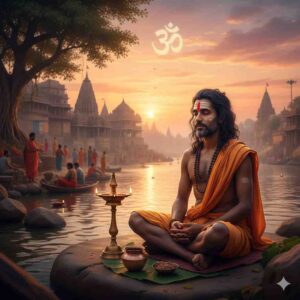A Path to Liberation and Equality for All
Sanatan Dharma, often referred to as the eternal way, is one of the world’s most ancient spiritual philosophies. Rooted in the principles ofdharma(righteousness),karma(action), andmoksha(liberation), it offers profound guidance for spiritual growth. What sets Sanatan Dharma apart is its inclusivity and adaptability, providing a path to liberation that transcends gender, caste, and societal barriers.
In a world striving for equality, the teachings of Sanatan Dharma stand out as inherently liberating, emphasizing the spiritual potential of every individual, regardless of their gender or circumstances.
Liberation Beyond Boundaries: Spiritual Equality for All
Unlike many ancient systems, Sanatan Dharma asserts that the ultimate goal of life—moksha, or liberation from the cycle of birth and death—is attainable by anyone who seeks it, regardless of gender. The Upanishads and other sacred texts emphasize the equality of souls, underscoring that spiritual growth is not confined to specific roles or identities.
For example, in theBrihadaranyaka Upanishad, Gargi, a renowned female philosopher, debates Yajnavalkya on the nature of reality, demonstrating that women were respected as spiritual equals and intellectual contributors in ancient India. Gargi’s role as a Vedic scholar reflects Sanatan Dharma’s acknowledgment of the intellectual and spiritual capacities of all genders.
The Indian government’sBharatiya Shikshan Mandalinitiative, launched in 2021, emphasized revisiting ancient texts to highlight such examples, ensuring that their progressive values are recognized and integrated into modern education.
Empowerment Through Dharma
Sanatan Dharma empowers individuals by encouraging them to fulfill their uniquedharma, or righteous duty, based on their abilities and circumstances. This concept extends beyond societal roles, offering both men and women the opportunity to contribute meaningfully to family, society, and spirituality.
Texts like theManusmritiandBhagavad Gitahave been both celebrated and criticized for their interpretations. However, modern scholars argue that these texts, when understood in context, promote harmony and balance. For instance, the Gita’s emphasis onkarma yoga—the path of selfless action—applies universally, transcending gender and promoting individual empowerment.
A 2023 UNESCO-backed study highlighted the relevance of ancient Indian practices, stating that Sanatan Dharma’s principles encourage introspection, self-improvement, and equality in spiritual pursuits, making it inherently inclusive.
Liberation in Practice: Spiritual Roles of Women and Men
Throughout history, Sanatan Dharma has celebrated women as nurturers of wisdom and spirituality. From Sita’s resilience in theRamayanato Draupadi’s assertiveness in theMahabharata, women have been depicted as embodiments of strength, compassion, and intellect.
TheAtharvavedaincludes hymns celebrating the equality of men and women, particularly in marriage, describing it as a partnership of equals. Additionally, theDevi Mahatmyacelebrates the feminine divine in forms like Durga and Saraswati, underscoring that women are not just seekers but also manifestations of ultimate power.
Men, too, are encouraged to embrace qualities like humility, compassion, and service, traditionally associated with nurturing roles, reflecting the balance Sanatan Dharma promotes.
Modern Recognition of Ancient Equality
Efforts to highlight Sanatan Dharma’s inclusivity are gaining traction in contemporary discourse. The Indian Ministry of Culture’s 2023 campaign,Nari Shakti aur Dharmic Moolya(Women’s Power and Spiritual Values), showcased how ancient scriptures celebrate gender equality and spiritual freedom.
Similarly, organizations like the International Society for Krishna Consciousness (ISKCON) emphasize the gender-neutral accessibility of bhakti (devotion), encouraging both men and women to pursue spiritual paths without discrimination.
A Path for All: Why It Matters Today
In a world often divided by identity and roles, Sanatan Dharma offers a liberating perspective. It teaches that the soul (atman) is genderless, eternal, and equal in its potential for liberation. By focusing on inner growth, ethical living, and selfless service, it provides tools for both genders to achieve spiritual fulfillment and societal harmony.
As India and the world revisit ancient wisdom for modern solutions, Sanatan Dharma’s timeless teachings remind us that liberation is not a privilege but a possibility for all. It stands as a beacon of equality, urging us to look beyond superficial differences and recognize the universal truth within.
This timeless wisdom is not just a philosophy—it is a call to action, a guide for living a life of balance, purpose, and spiritual freedom, regardless of who we are.













